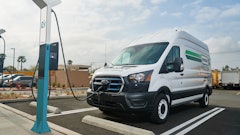
Index data from ITS Logistics reflects the considerable demand shifts for the Ports of Norfolk, New York, and New Jersey due to the recent Francis Scott Key Bridge damage, effectively eliminating access to the inner harbor and closing the Port of Baltimore.
“The eastern seaboard will see considerable container diversions as freight originally scheduled to arrive in Baltimore diverts to new destinations,” says Paul Brashier, VP of drayage and intermodal for ITS Logistics. “This is the most immediate concern for shippers over the next couple of weeks. As we get further into April and May, new ports – primarily New York, New Jersey, and Norfolk – will become the North American entry point for Baltimore freight. Unplanned diversions to these ports will increase congestion, challenge operations at these locations, and drive dray trucking rates upward.”
Key takeaways:
- According to the April index, the long-term implications of this event could be a further migration of trans-Pacific freight to West Coast North American ports from the East Coast, a shift that shippers and logistics professionals need to be prepared for.
“On the U.S. West Coast, Los Angeles and Long Beach IPI Rail containers are still seeing significant dwell times as rail provider equipment is out of balance due to increased demand for East Coast freight arriving to the US West Coast,” adds Brashier. “Shippers and operators in Vancouver are also reporting delays. These challenges are creating increases in dray-transload and one-way operations for low inventory SKUs.”


























